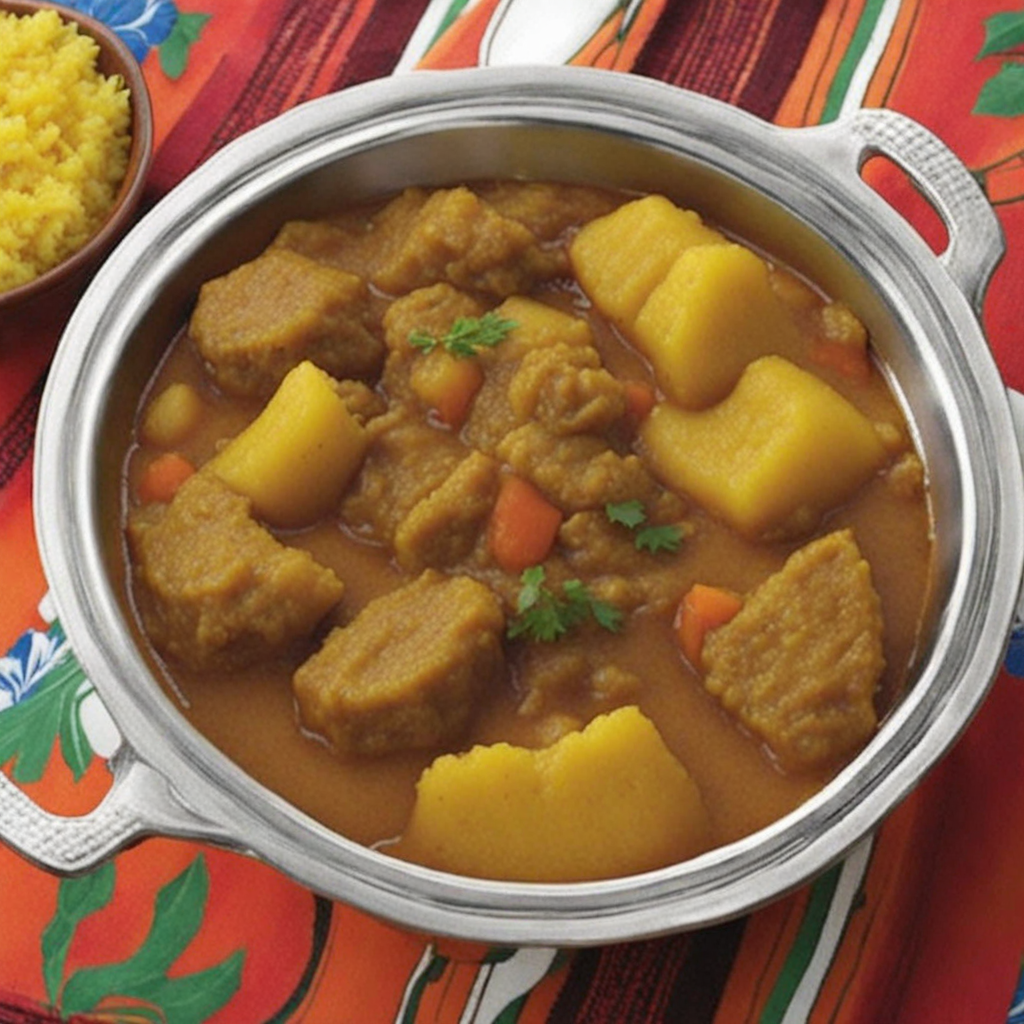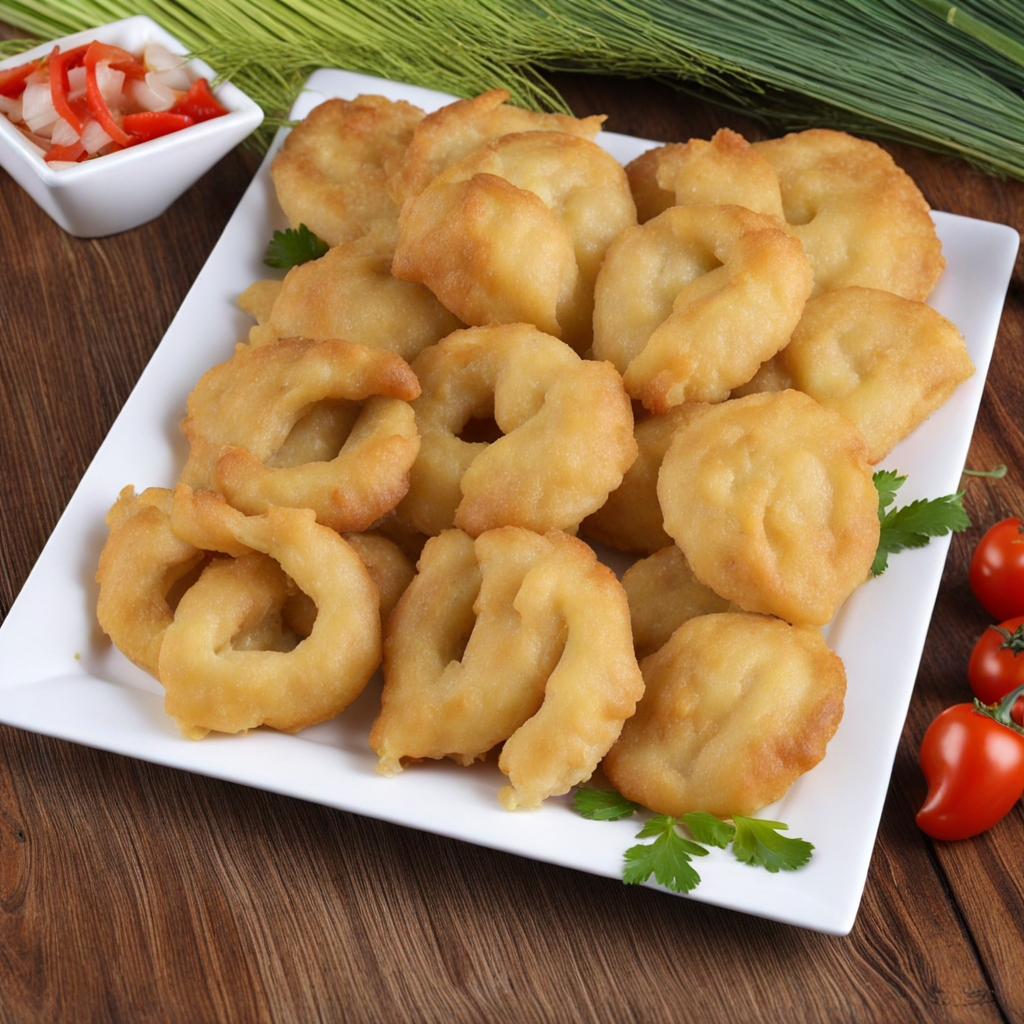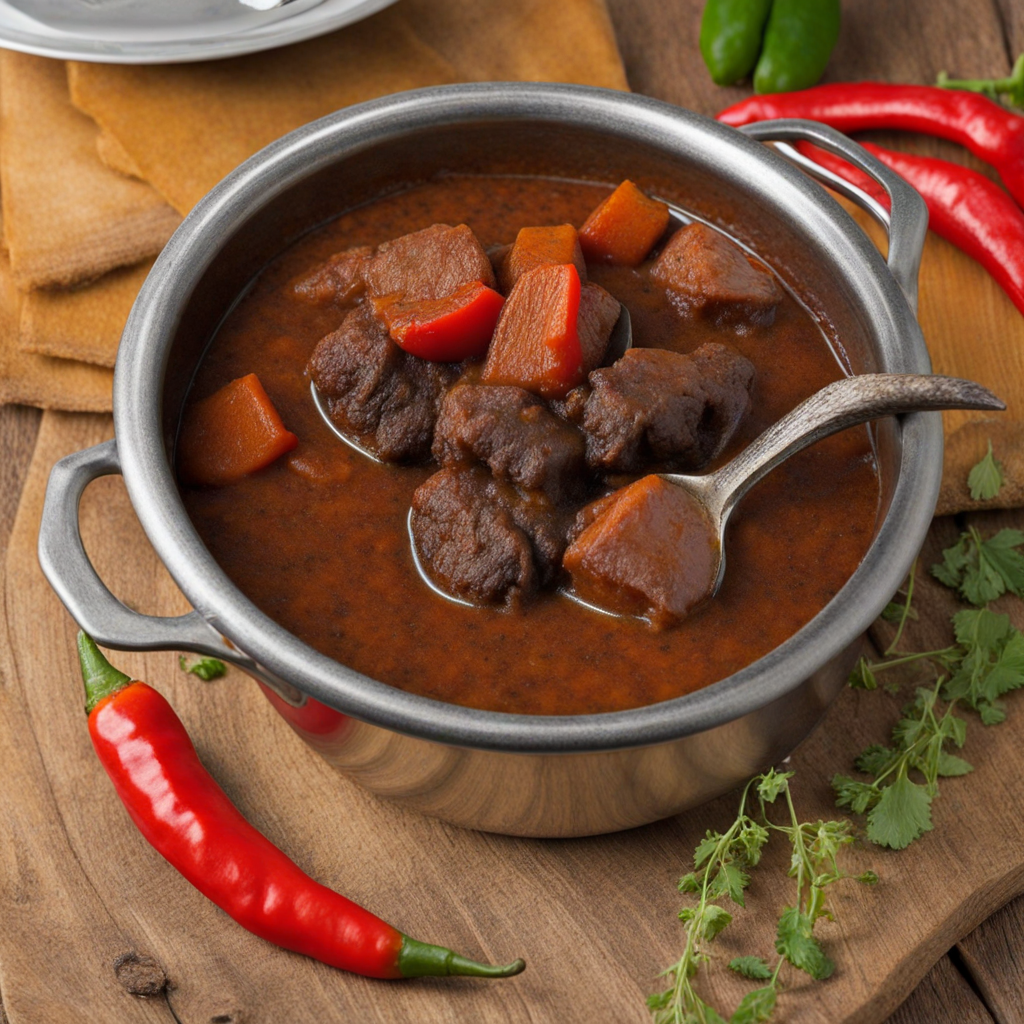Metemgee
Metemgee is a beloved dish from Guyana that beautifully showcases the country's rich culinary heritage. This comforting one-pot meal is primarily made with a variety of root vegetables such as cassava, sweet potatoes, and eddoes, all of which are simmered together to create a hearty base. The root vegetables are often complemented by the addition of green bananas, which add a delightful creaminess to the dish. The ingredients are usually cooked in a flavorful coconut milk broth, infused with aromatic spices and herbs that bring a fragrant warmth to every bite. The combination of textures—soft, creamy, and slightly fibrous—makes Metemgee a unique and satisfying experience for the palate. As you savor Metemgee, you'll notice the subtle sweetness from the coconut milk, which balances perfectly with the earthy flavors of the root vegetables. The dish may also include pieces of fish or meat, depending on regional variations and personal preferences, enhancing its heartiness and providing a protein-rich component. Each spoonful is a delightful mix of flavors that reflects the diverse influences in Guyanese cuisine, from Indigenous practices to African and Indian culinary traditions. It's not just a meal; it's a representation of community and culture, often enjoyed during family gatherings or festive occasions. Metemgee is not only a delicious dish but also a versatile canvas for personalization. Some may choose to add spices like thyme or garlic, while others might prefer a spicier kick with the inclusion of pepper. This adaptability allows everyone to discover their unique interpretation of the dish, making it a true culinary adventure. Whether enjoyed on its own or paired with a fresh salad or fried plantains, Metemgee offers a warm and inviting taste of Guyana that invites you to explore more of its rich gastronomic landscape.
How It Became This Dish
The Rich Tapestry of Metemgee: A Culinary Journey through Guyana Metemgee is more than just a dish; it is a culinary emblem of Guyana, a country characterized by its rich cultural diversity and an amalgamation of flavors that reflect its history. This hearty dish, which consists mainly of boiled green plantains, yams, and cassava, often accompanied by meat or fish, serves as a staple in many Guyanese households and embodies the spirit of the nation’s multicultural heritage. #### Origins of Metemgee The origins of Metemgee can be traced back to the indigenous peoples of Guyana, combined with the influences of African, Indian, Chinese, and European culinary traditions that have shaped the nation since colonial times. The indigenous peoples, specifically the Arawaks and Caribs, cultivated root vegetables such as cassava and yams, staples that remained integral to the region's diet long before the arrival of Europeans. Cassava, in particular, is a significant component of Metemgee, as it was a primary food source for indigenous communities and has been cultivated in South America for thousands of years. When enslaved Africans were brought to Guyana in the 17th and 18th centuries to work on sugar plantations, they introduced their own food traditions, which included a variety of cooking techniques and seasonings. The use of spices, herbs, and methods of preparation from African heritage enriched the local cuisine, leading to the distinct taste and presentation of Metemgee we recognize today. As indentured laborers from India began arriving in the mid-19th century, they brought their culinary practices, further diversifying the food landscape of Guyana. Ingredients such as turmeric, cumin, and coconut milk became influential, although they are not traditional components of Metemgee itself. Still, the blending of these various cultures contributed to the evolution of the dish, making it a symbol of unity amid diversity. #### Cultural Significance Metemgee is a dish steeped in cultural significance within Guyana. It is often prepared during communal gatherings and celebrations, serving as a reminder of the importance of family and community in Guyanese society. The dish is typically a part of Sunday family meals, often accompanied by fish or meat, and is seen as a comfort food that brings people together. For many Guyanese, the act of cooking Metemgee is steeped in tradition. The preparation process often involves family members gathering to peel and chop the vegetables, reflecting the communal spirit that underscores its significance. This communal cooking not only strengthens familial bonds but also serves to pass down culinary knowledge from one generation to the next, preserving the cultural heritage embedded in the dish. Moreover, Metemgee has become a symbol of national identity. As Guyana continues to celebrate its multicultural population, the dish represents a culinary fusion that reflects the country’s diverse history. Festivals and cultural events often showcase Metemgee, allowing both locals and visitors to experience the rich flavors and traditions of Guyanese cuisine. #### Evolution Over Time As Guyana has developed, so too has Metemgee. Traditionally, the dish was prepared with ingredients that were locally sourced and readily available, but globalization and modernization have influenced its preparation and presentation. Today, chefs and home cooks alike experiment with variations of Metemgee, incorporating different proteins, such as chicken, beef, or shrimp, and adding spices that reflect contemporary culinary trends. In urban areas, where access to a variety of ingredients has increased, innovative interpretations of Metemgee have emerged. Some modern recipes include coconut milk for a creamy texture, while others might incorporate a medley of vegetables such as bell peppers or carrots to enhance its nutritional value and visual appeal. This adaptation speaks to the evolving nature of culinary practices in Guyana, reflecting both a respect for tradition and an openness to innovation. Furthermore, the diaspora of the Guyanese community has played a significant role in the evolution of Metemgee. As Guyanese people have immigrated to countries like the United States, Canada, and the United Kingdom, they have taken their culinary traditions with them. Metemgee has found its way into the kitchens of expatriates, often adapted to local ingredients and tastes, yet still retaining its essence. Restaurants in these countries frequently feature Metemgee on their menus, introducing this traditional dish to new audiences and fostering a greater appreciation for Guyanese cuisine. #### Conclusion Metemgee is not just a meal; it is a narrative woven through the fabric of Guyanese culture. From its indigenous roots to the amalgamation of culinary practices brought by various immigrant communities, it encapsulates the essence of a nation marked by diversity. The dish serves as a reminder of the historical journeys that have shaped Guyana, providing a taste of its past while embracing the present and future. As Guyana continues to evolve, so too will Metemgee, adapting to new influences while remaining a beloved staple. It stands as a testament to the resilience of cultural identity through food, celebrating the rich history and vibrant community spirit that define this remarkable nation. Whether served at family gatherings, community celebrations, or on the plates of expatriates far from home, Metemgee remains a symbol of unity, heritage, and the enduring love for a dish that tells a story as rich as its flavors.
You may like
Discover local flavors from Guyana







